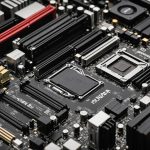Understanding Low-Bandwidth Environments
Low-bandwidth environments are spaces where Internet connectivity is limited or inconsistent, impacting the performance of AI models. Characteristics of such environments include narrow data channels, frequent disconnections, and high latency, making AI processing more challenging. These conditions can severely restrict AI models, which often rely on robust data flow for training and inference.
AI systems in low-bandwidth areas encounter several hurdles. For instance, real-time data processing becomes problematic because of delayed transmissions, which can degrade the model’s accuracy and speed. The reliance on centralized servers exacerbates this issue, as constant data relay is required.
Also read : Transforming Traffic Oversight: Leveraging Edge AI for Instantaneous Surveillance Solutions
Optimizing AI for mobile devices and remote regions is crucial to address these challenges. This involves making models lightweight and efficient, ensuring they operate effectively despite connectivity constraints. Such optimization enables AI applications to function autonomously, thus reducing dependency on external infrastructure.
By crafting AI systems attuned to low-bandwidth conditions, developers can enhance reliability and expand AI’s reach into underserved regions. This ensures technologies remain accessible and effective, even where connectivity hinders typical data flow. Optimized AI can therefore empower communities by providing robust technological solutions that withstand environmental constraints.
Have you seen this : Elevate Your NLP Skills: Effective Strategies to Enhance Model Accuracy
Techniques for Model Compression
In the realm of AI optimization, model compression stands out as a pivotal technique to enhance efficiency without compromising performance. By employing strategies such as pruning and quantization, developers can significantly reduce the size of AI models. Pruning involves the elimination of redundant neurons and connections, streamlining the model, while quantization reduces the precision of the model’s weights, transforming them into a more compact form. Despite the reduction in size, these techniques maintain most of the model’s accuracy, making them indispensable for resource-constrained environments.
However, the trade-offs between compactness and precision can pose challenges. A smaller model may occasionally witness a drop in accuracy, necessitating a delicate balance. Several tools and frameworks are available to assist in this process, including TensorFlow Lite and PyTorch Mobile, which cater specifically to the needs of lightweight models. These tools often incorporate user-friendly interfaces and extensive support, making the integration of model compression techniques straightforward for developers.
With the continuous advancement in compression methodologies, AI systems can now operate more effectively in diverse settings, including low-bandwidth regions, ultimately broadening their applicability and accessibility.
Utilizing Edge Computing
Edge computing plays a pivotal role in enhancing AI processing capabilities, particularly in low-bandwidth environments. By processing data closer to the source, edge computing minimizes the need for data transmission to centralized servers, addressing the AI performance challenges posed by limited connectivity.
In essence, edge computing enables devices to perform computations locally. This approach significantly reduces latency, as data does not need to travel across potentially congested networks. Consequently, it leads to improved speed and accuracy of AI models, crucial in environments with unreliable Internet access.
Benefits of processing data at the edge for low-bandwidth scenarios are profound. First, it enhances real-time decision-making by allowing faster processing and immediate actions. Second, it conserves bandwidth by restricting data transfer to only essential information. Third, it ensures greater data security as sensitive data does not leave the local device.
Noteworthy examples of edge computing implementations include smart cities, where sensors locally process data to manage traffic efficiently, and healthcare, where wearable devices analyze patient data instantly. These implementations highlight edge computing’s capacity to bolster AI effectiveness in settings where traditional data relay is bottlenecked by connectivity issues.
Efficient Data Handling Strategies
Navigating AI performance challenges in low-bandwidth environments necessitates strategic data handling. Effective strategies can significantly reduce data transfer and enhance model efficiency.
Data sampling stands out as a pivotal technique. By selectively processing smaller data subsets, AI systems can preserve bandwidth without majorly impacting accuracy. This approach prioritizes essential data, minimizing unnecessary transmission.
Implementing caching solutions also proves beneficial. Storing data temporarily on local devices reduces repetitive data fetching, thus conserving bandwidth. Caching augments speed and efficiency, allowing AI models to function optimally even with limited connectivity.
Moreover, data preprocessing is crucial for bandwidth conservation. Cleaned and organized data often requires less bandwidth for transmission, enhancing overall processing efficiency. Preprocessing eliminates irrelevant information, concentrating on data critical to AI tasks.
Federated learning emerges as a transformative approach, reducing dependency on constant data relay. By training models locally on devices and only transmitting crucial updates, it optimizes data usage, maintaining performance in bandwidth-constrained settings.
Integrating these strategies not only addresses AI performance challenges but also fortifies AI systems’ resilience in low-bandwidth conditions, enabling widespread application across diverse, underserved areas.
Innovations in AI Frameworks and Tools
In navigating low-bandwidth environments, leveraging AI frameworks and optimization tools is paramount. These technologies are designed to ensure that AI systems operate efficiently even with limited connectivity. Several popular frameworks cater specifically to low-bandwidth applications. For instance, TensorFlow Lite and PyTorch Mobile offer streamlined versions of their larger counterparts, ensuring models are lightweight yet robust. Both frameworks facilitate the deployment of AI without significant sacrifices in performance.
Comparing tools designed for model optimization involves assessing ease of use, feature sets, and compatibility with existing AI deployments. Tools such as ONNX and TF-TRT provide unique advantages in compressing models, with ONNX focusing on interoperability and TF-TRT excelling in runtime optimizations. Understanding these distinctions aids developers in selecting the right tool for specific needs.
Notable case studies demonstrate the efficacy of these frameworks. For example, using TensorFlow Lite in agricultural drone applications has resulted in improved image analysis without internet reliance, expanding AI’s reach into rural areas. These success stories illustrate the potential of optimized frameworks and tools in transforming challenging environments, offering insights into future trends where AI becomes increasingly indispensable.
Real-World Applications and Case Studies
The deployment of optimized AI in low-bandwidth environments is increasingly prevalent across various industries. Industries such as agriculture, healthcare, and logistics have embraced these solutions to overcome connectivity challenges.
Agriculture benefits immensely by utilizing AI for remote data collection and analysis, optimizing crop yield predictions in areas with poor Internet connectivity. For example, drone technology equipped with TensorFlow Lite enables efficient image analysis, facilitating resource allocation without constant network access.
Healthcare sees significant advancements in patient monitoring through wearable devices. These gadgets conduct real-time data processing locally, essential for patient care in rural regions with limited bandwidth. By maintaining patient data on-device until necessary, healthcare practitioners ensure data privacy and timely interventions.
In logistics, AI-powered systems streamline supply chain management even in bandwidth-strained areas. Through edge computing, devices perform localized data analytics, leading to improved route optimization and reduced delivery times.
These case studies underscore the effectiveness of AI optimization strategies, showcasing how diverse industries leverage technology in bandwidth-restricted settings. Lessons from these implementations reveal the growing importance of adapting AI to meet real-world connectivity constraints, promising exciting future trends in expanding AI’s reach.











